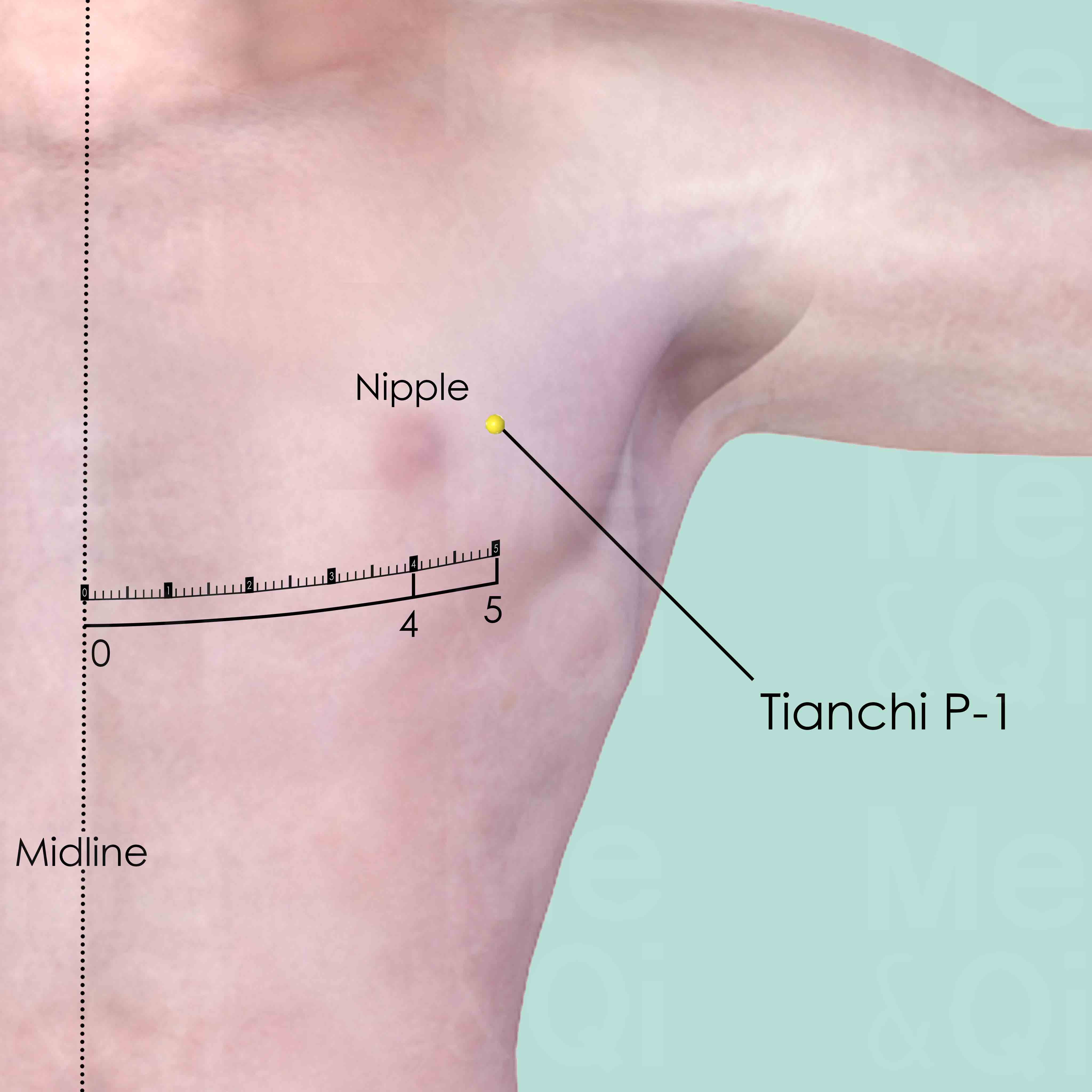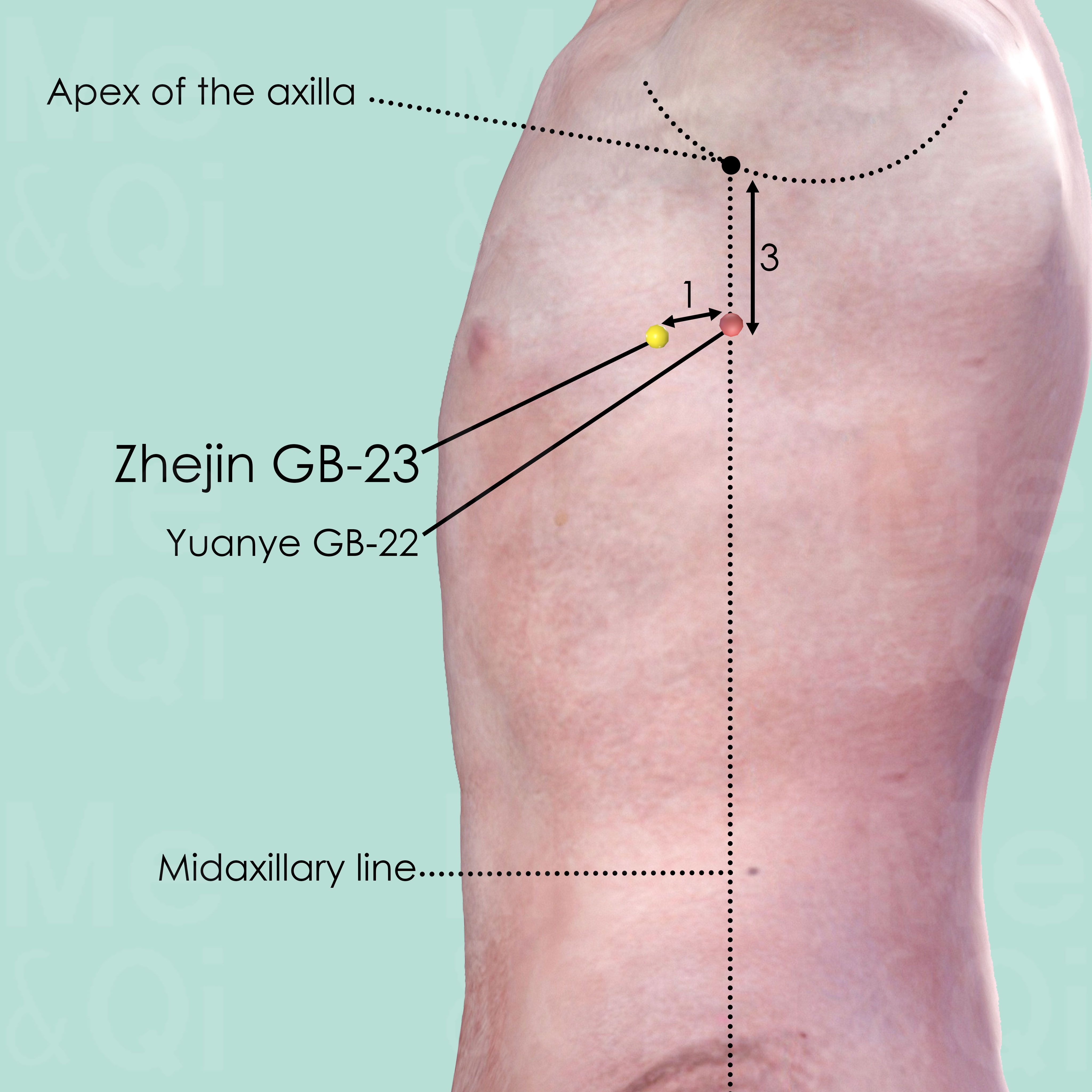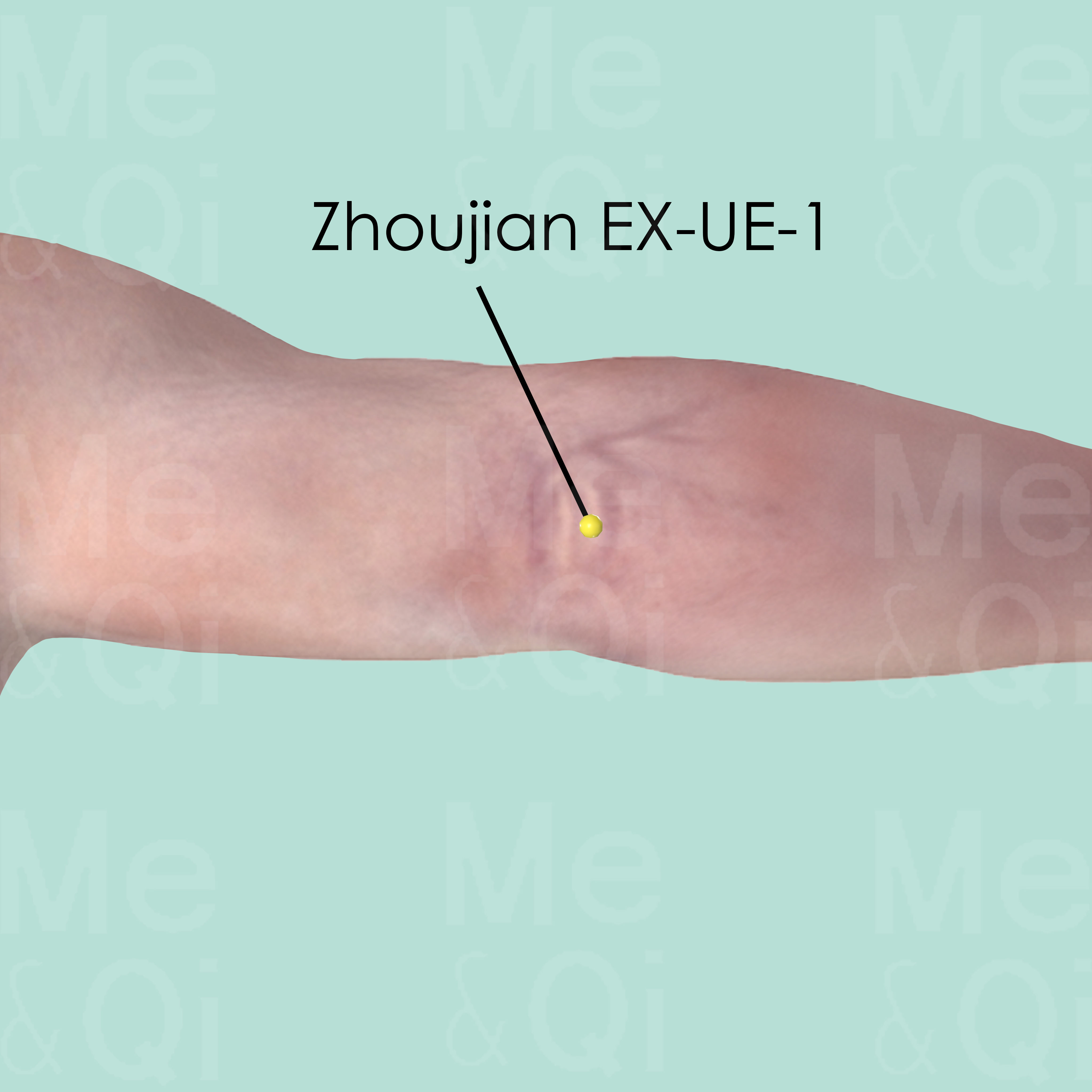Tuberculosisaccording to TCM
Symptom family: Tuberculosis
Sub-symptom(s): Pulmonary Tuberculosis Peritoneal Tuberculosis Testicular Tuberculosis Tubercular Meningitis Scrofula Lymphatic Tuberculosis
What is Fibromyalgia?
Fibromyalgia is a complex and often misunderstood condition characterized by widespread musculoskeletal pain, fatigue, sleep disturbances, and memory and mood issues. It is a syndrome that affects millions worldwide, presenting a challenge in both diagnosis and management. Despite its prevalence, the exact cause of fibromyalgia remains unclear, with research suggesting a combination of genetic, environmental, and psychological factors.
How Does TCM View Fibromyalgia?
In contrast to the Western medical perspective, Traditional Chinese Medicine (TCM) approaches fibromyalgia through the lens of energy flow and balance within the body. TCM posits that fibromyalgia symptoms arise from imbalances or blockages in the body's vital energy, known as Qi.
These imbalances are thought to be caused by various patterns of disharmony, emphasizing the importance of identifying the specific pattern affecting each individual before pursuing treatment. This holistic approach looks beyond the symptoms to address the root cause of the condition.
Causes of Fibromyalgia According to TCM
TCM interprets fibromyalgia through the prism of Qi (vital energy) disruption, with particular attention to patterns like Painful Obstruction, which encompasses conditions where pain and stiffness arise from obstructed flow in the channels. Two prevalent causes in this framework are invasions by Wind-Cold and Damp-Wind. The former is akin to a cold draft seeping into the body, chilling and stiffening the muscles and joints, impeding the smooth flow of Qi.
The latter, Damp-Wind, describes a muggy, heavy air penetrating the body, leading to aching, heavy limbs, and a sensation of being weighed down. These patterns highlight TCM's unique perspective on environmental influences on bodily harmony and health.
TCM Herbal Formulas for Tuberculosis
To combat fibromyalgia, particularly when symptoms align with the Painful Obstruction pattern due to Wind-Cold and Damp-Wind, TCM turns to specific herbal formulas. For issues stemming from Wind invading the channels, causing joint and muscle pain, a formula like Da Fang Feng Tang is often prescribed. This formula uses Saposhnikovia Roots to expel wind and alleviate pain, warming and freeing the obstructed channels.
In cases where Wind-Cold is at play, causing deep, piercing joint pains and stiffness, Jiu Wei Qiang Huo Tang, featuring Notopterygium Roots, is chosen to dispel cold, damp accumulations, restoring the free flow of Qi and blood. These targeted treatments reflect TCM's approach of addressing the specific disharmonies contributing to fibromyalgia's complex symptomatology.
Explore below some TCM herbal formulas used to address tuberculosis, organized by formula type.
- By Formula Type
- Formulas that nourish yin and tonify
- Formulas that clear heat from deficiency
- Formulas that tonify qi
- Formulas that stop bleeding
- Formulas that disperse dryness and moisten
- Formulas that invigorate blood and dispel blood stagnation
- Formulas that clear wind-Heat
- Formulas that dispel phlegm
- Formulas that vent membrane source
- Formulas that warm the middle and dispel cold
- Formulas that stabilize exterior and stop sweating
- Formulas that clear qi-level heat
- Formulas that transform phlegm and extinguish wind
- Formulas that clear external abscesses and sores
Formulas that nourish Yin and tonify
Tuberculosis can be treated by these formulas when it arises from a deficiency in Yin energy, needing nourishment and strengthening of the body's vital essence.
One such formula is Da Bu Yin Wan, with prepared rehmannia as a key herb.
Other formulas of this category are listed in the table below.
All "formulas that nourish yin and tonify" recommended for tuberculosis
Formulas that clear Heat from Deficiency
Tuberculosis can be treated by these formulas if it is due to an imbalance where yin deficiency leads to a false heat syndrome.
One such formula is Dang Gui Liu Huang Tang, with dong quai as a key herb.
Other formulas of this category are listed in the table below.
All "formulas that clear heat from deficiency" recommended for tuberculosis
Formulas that tonify Qi
Tuberculosis can be treated by these formulas if it results from Qi deficiency, necessitating treatments that boost the body's vital energy.
One such formula is Bu Fei Tang, with ginseng as a key herb.
Other formulas of this category are listed in the table below.
All "formulas that tonify qi" recommended for tuberculosis
| Formula | Key herbs |
|---|---|
| Bu Fei Tang | Ginseng (Ren Shen), Milkvetch Roots (Huang Qi) |
| Ren Shen Ge Jie San | Tokay Geckos (Ge Jie), Ginseng (Ren Shen) |
| Sheng Mai San | Ginseng (Ren Shen) |
Formulas that stop bleeding
Tuberculosis can be treated by these formulas when it is caused by various factors leading to bleeding, requiring hemostatic actions.
One such formula is Ke Xie Fang, with natural indigo as a key herb.
Other formulas of this category are listed in the table below.
All "formulas that stop bleeding" recommended for tuberculosis
| Formula | Key herbs |
|---|---|
| Ke Xie Fang | Natural Indigo (Qing Dai), Cape Jasmine Fruits (Zhi Zi) |
| Shi Hui San | Japanese Thistle (Da Ji), Field Thistles (Xiao Ji) |
Formulas that disperse Dryness and moisten
Tuberculosis can be treated by these formulas when caused by dryness that impairs the body's moisture balance, necessitating herbs that moisten and alleviate dryness.
One such formula is Qing Zao Jiu Fei Tang, with mulberry leaves as a key herb.
Other formulas of this category are listed in the table below.
All "formulas that disperse dryness and moisten" recommended for tuberculosis
| Formula | Key herbs |
|---|---|
| Qing Zao Jiu Fei Tang | Mulberry Leaves (Sang Ye) |
| Sha Shen Mai Men Dong Tang | Glehnia Roots (Bei Sha Shen), Dwarf Lilyturf Roots (Mai Dong), Mulberry Leaves (Sang Ye) |
Formulas that invigorate Blood and dispel Blood Stagnation
Tuberculosis can be treated by these formulas if it arises from poor blood circulation or stagnation of blood, which often manifests in pain or swelling.
One such formula is Da Huang Zhe Chong Wan, with rhubarb as a key herb.
Other formulas of this category are listed in the table below.
All "formulas that invigorate blood and dispel blood stagnation" recommended for tuberculosis
| Formula | Key herbs |
|---|---|
| Da Huang Zhe Chong Wan | Rhubarb (Da Huang), Ground Beetles (Tu Bie Chong) |
| Di Dang Tang | Leeches (Shui Zhi), Tabanus Horseflies (Meng Chong) |
Formulas that clear Wind-Heat
Tuberculosis can be treated by these formulas if it originates from a wind-heat invasion.
One such formula is Jing Jie Lian Qiao Tang, with japanese catnip as a key herb.
Formulas that dispel Phlegm
Tuberculosis can be treated by these formulas when it is linked to phlegm accumulation, affecting respiratory and other body functions.
One such formula is Bei Mu Gua Lou San, with fritillary bulb as a key herb.
Formulas that vent membrane source
Tuberculosis can be treated by these formulas if it results from blockages in the body, often manifested as masses or lumps, needing actions that open and resolve these obstructions.
One such formula is Chai Hu Gui Jiang Tang, with bupleurum root as a key herb.
Formulas that warm the middle and dispel Cold
Tuberculosis can be treated by these formulas when it is due to cold in the middle jiao (digestive region), necessitating warming and cold-dispelling actions.
One such formula is Huang Qi Jian Zhong Tang, with milkvetch root as a key herb.
Formulas that stabilize Exterior and stop sweating
Tuberculosis can be treated by these formulas if it arises from a weakness in the body's exterior defense, leading to spontaneous sweating.
One such formula is Mu Li San, with oyster shells as a key herb.
Formulas that clear Qi-level Heat
Tuberculosis can be treated by these formulas when it results from an intense heat condition at the qi level, affecting the body's energy flow.
One such formula is Zhi Zi Chi Tang, with cape jasmine fruit as a key herb.
Formulas that transform Phlegm and extinguish Wind
Tuberculosis can be treated by these formulas when it is due to phlegm causing internal wind symptoms, such as tremors or dizziness.
One such formula is Ban Xia Bai Zhu Tian Ma Tang, with crow-dipper rhizome as a key herb.
Formulas that clear external abscesses and sores
Tuberculosis can be treated by formulas that clear external abscesses and sores if it is due to localized infections or inflammations on the skin.
One such formula is San Zhong Kui Jian Tang, with phellodendron bark as a key herb.
Acupoints for Tuberculosis
Explore below some acupoints used to address tuberculosis, organized by meridian.
- By Meridian
- Large Intestine Channel
- Stomach Channel
- Bladder Channel
- Triple Burner Channel
- Pericardium Channel
- Small Intestine Channel
- Extra Points: Head and Neck (EX-HN)
- Gall Bladder Channel
- Extra Points: Upper Extremities (EX-UE)
- Heart Channel
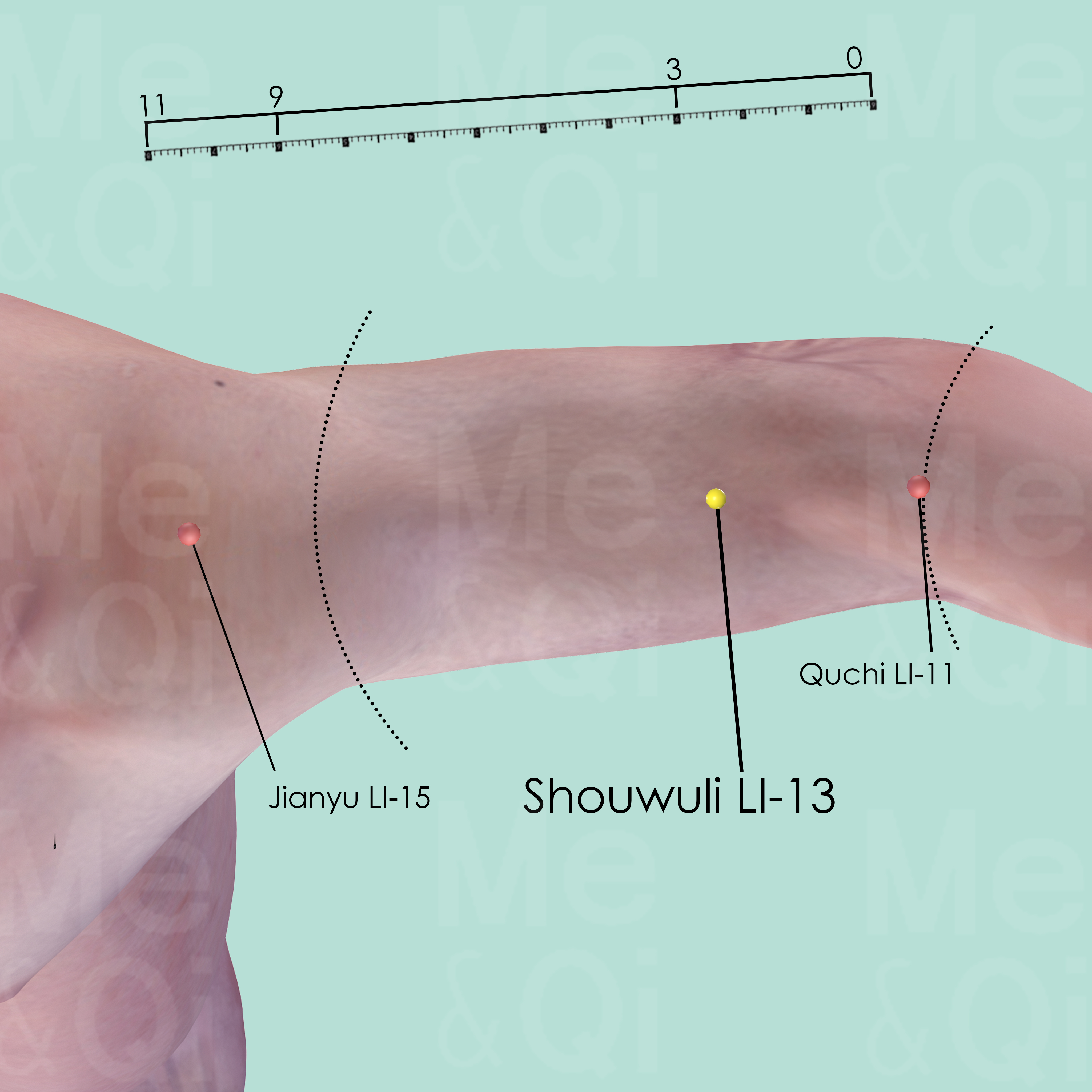
Shouwuli LI-13
Superior to the lateral epicondyle of the humerus, 3 cun above Quchi LI-11, on the line connecting Quchi LI-11 and Jianyu LI-15.
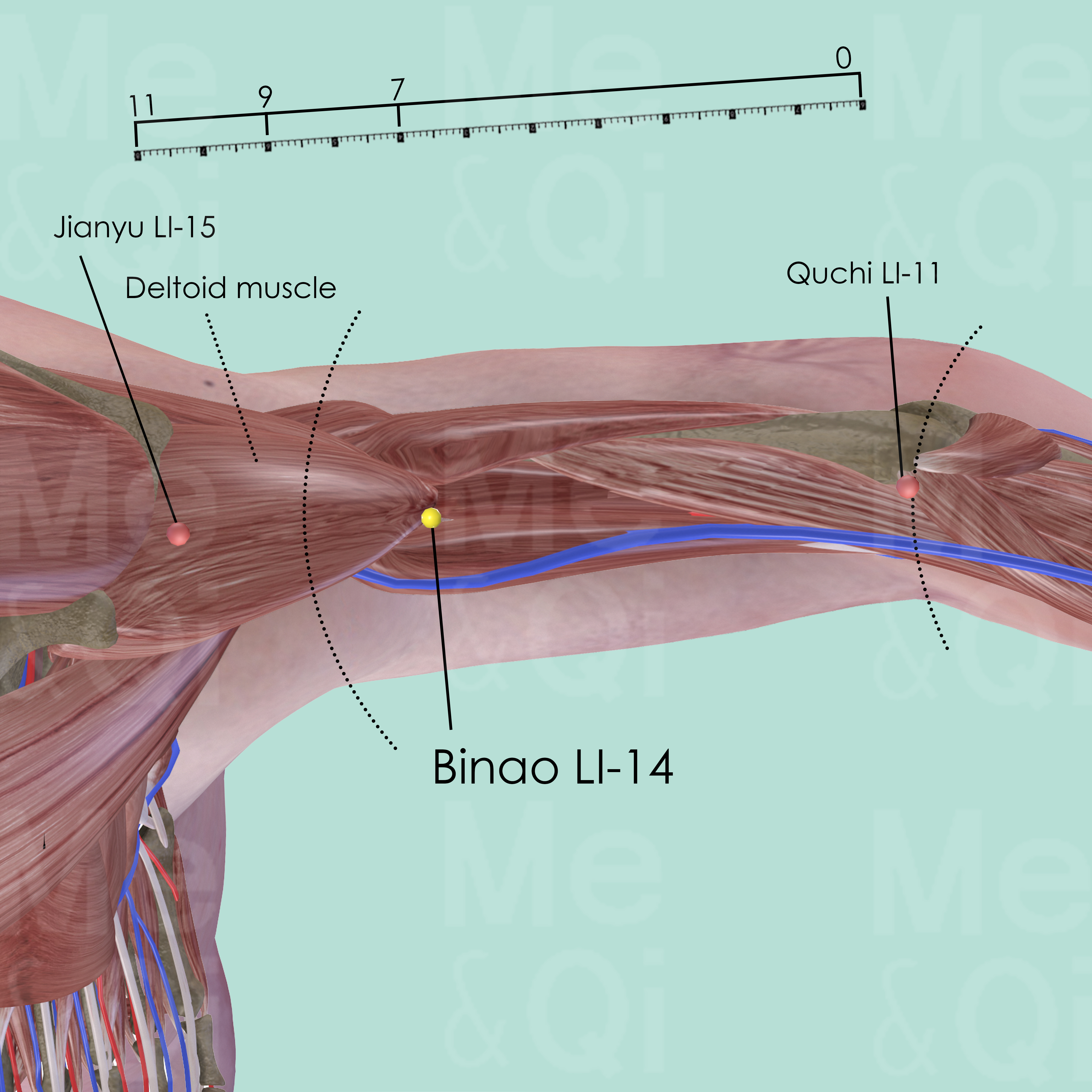
Binao LI-14
On the radial side of the humerus, superior to the lower end of deltoid muscle, on the line connecting Quchi LI-11 and Jianyu LI-15, 7 cun proximal to Quchi LI-11.
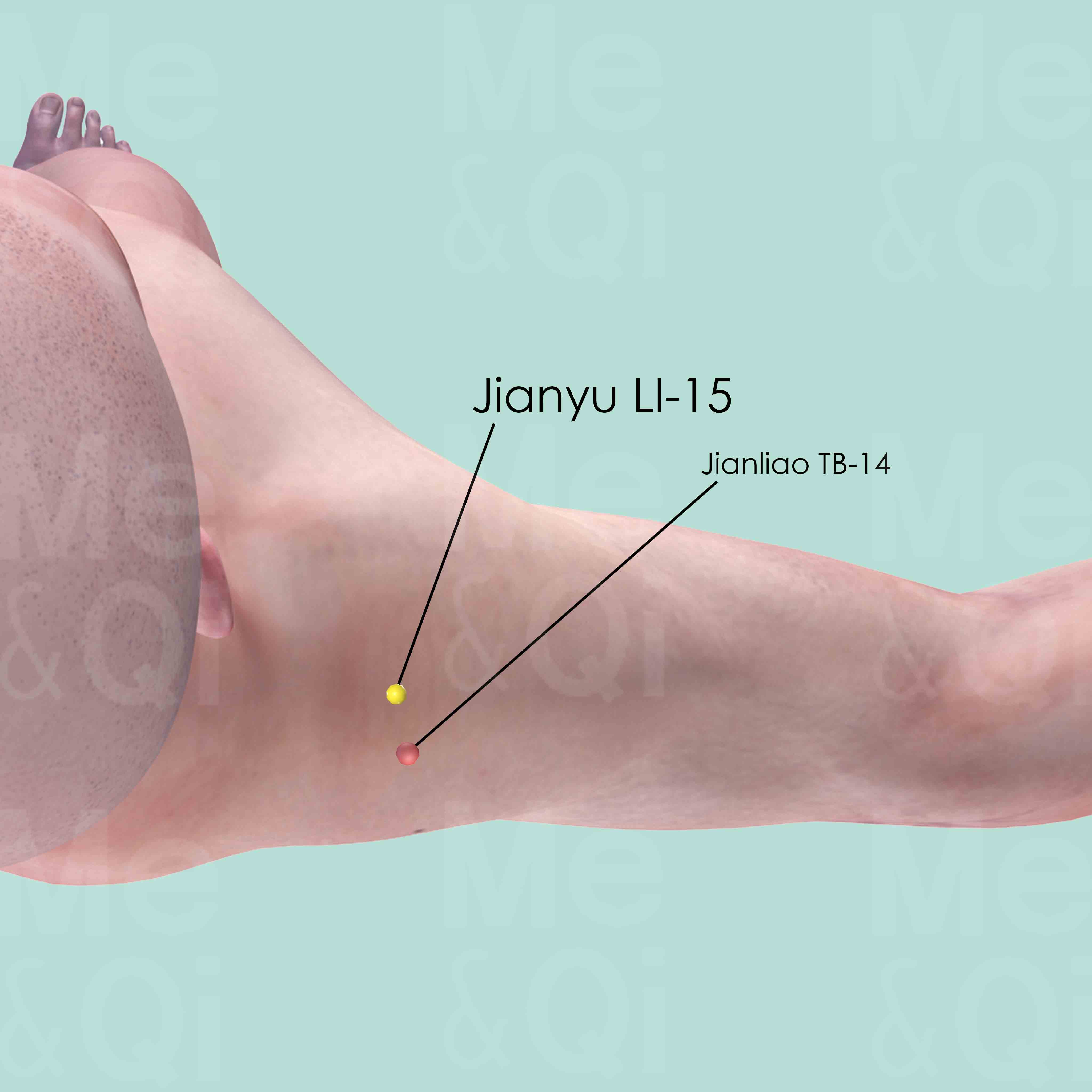
Jianyu LI-15
Jianyu LI-15 is located antero-inferior to the acromion, between the clavicular and acromial portions of the deltoid muscle.
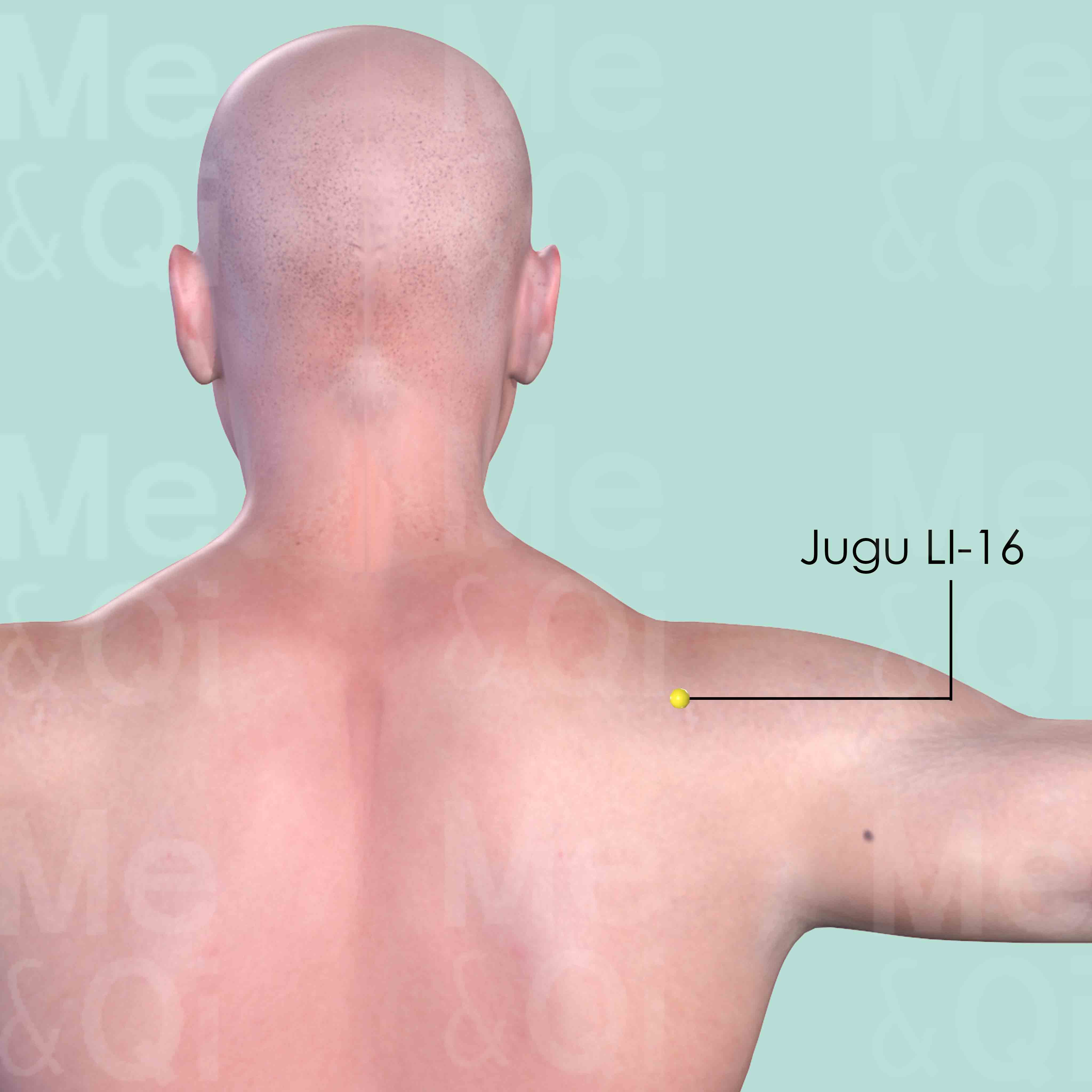
Jugu LI-16
In the upper aspect of the shoulder, in the depression between the acromio-clavicular joint and the scapular spine.
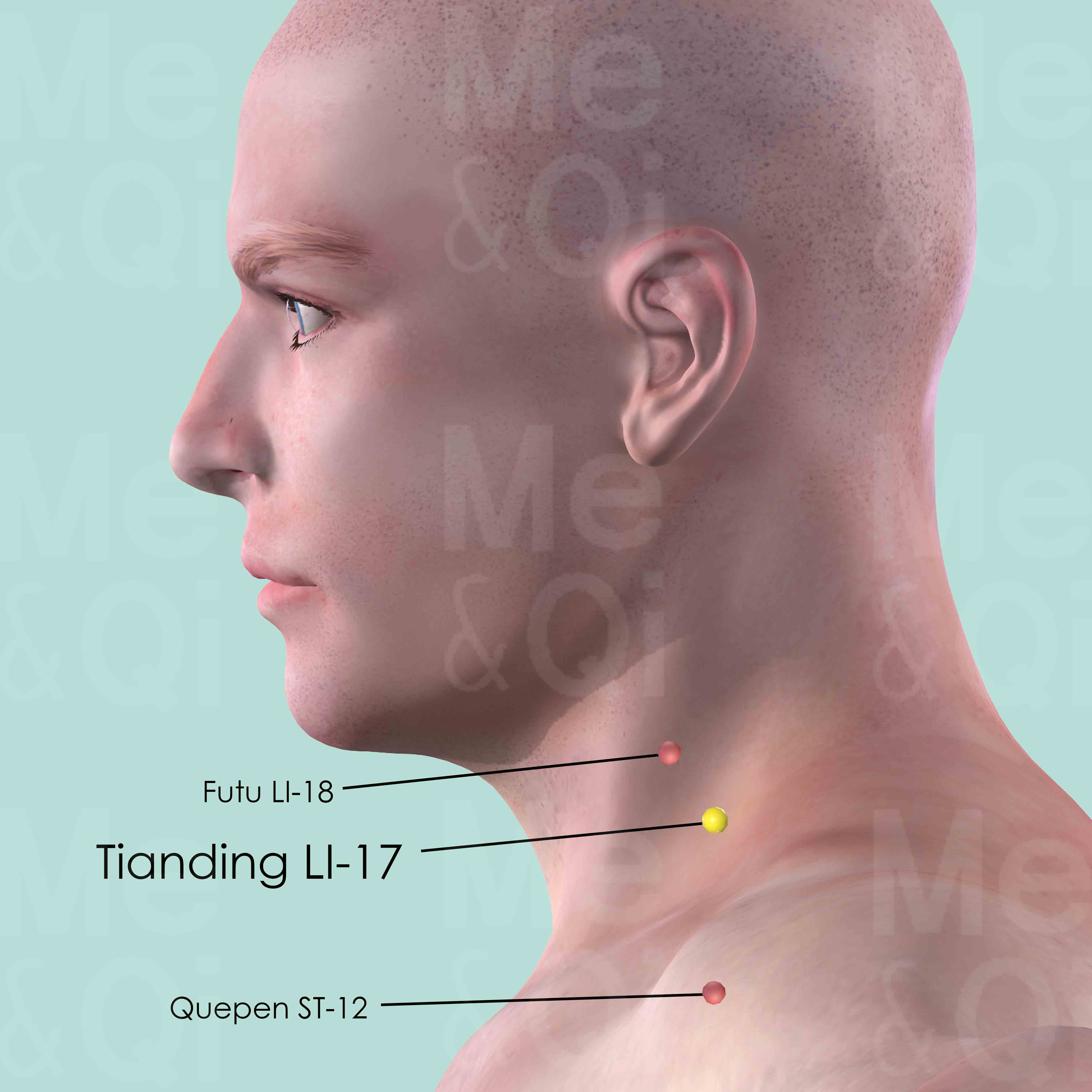
Tianding LI-17
Tianding LI-17 is located on the lateral side of the neck, on the posterior border of the sternocleidomastoid muscle, superior to Quepen ST-12 at the midpoint of the supraclavicular fossa. It is 1 cun below Futu LI-18 which is between the two head of the sternocleidomastoid muscle.
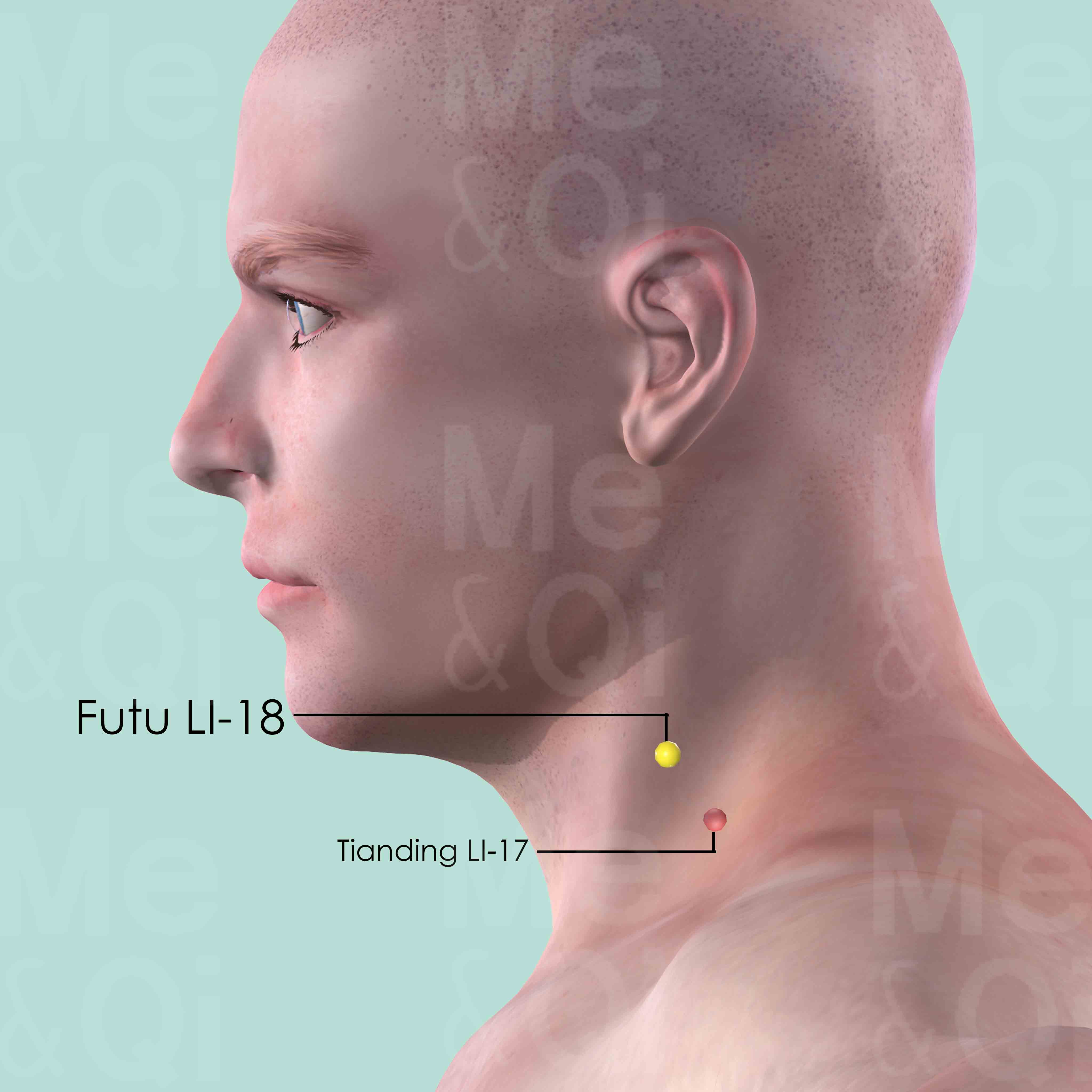
Futu LI-18
On the lateral side of the neck, level with the tip of Adam's apple, between the sternal head and clavicular head of sternocleidomastoid muscle.
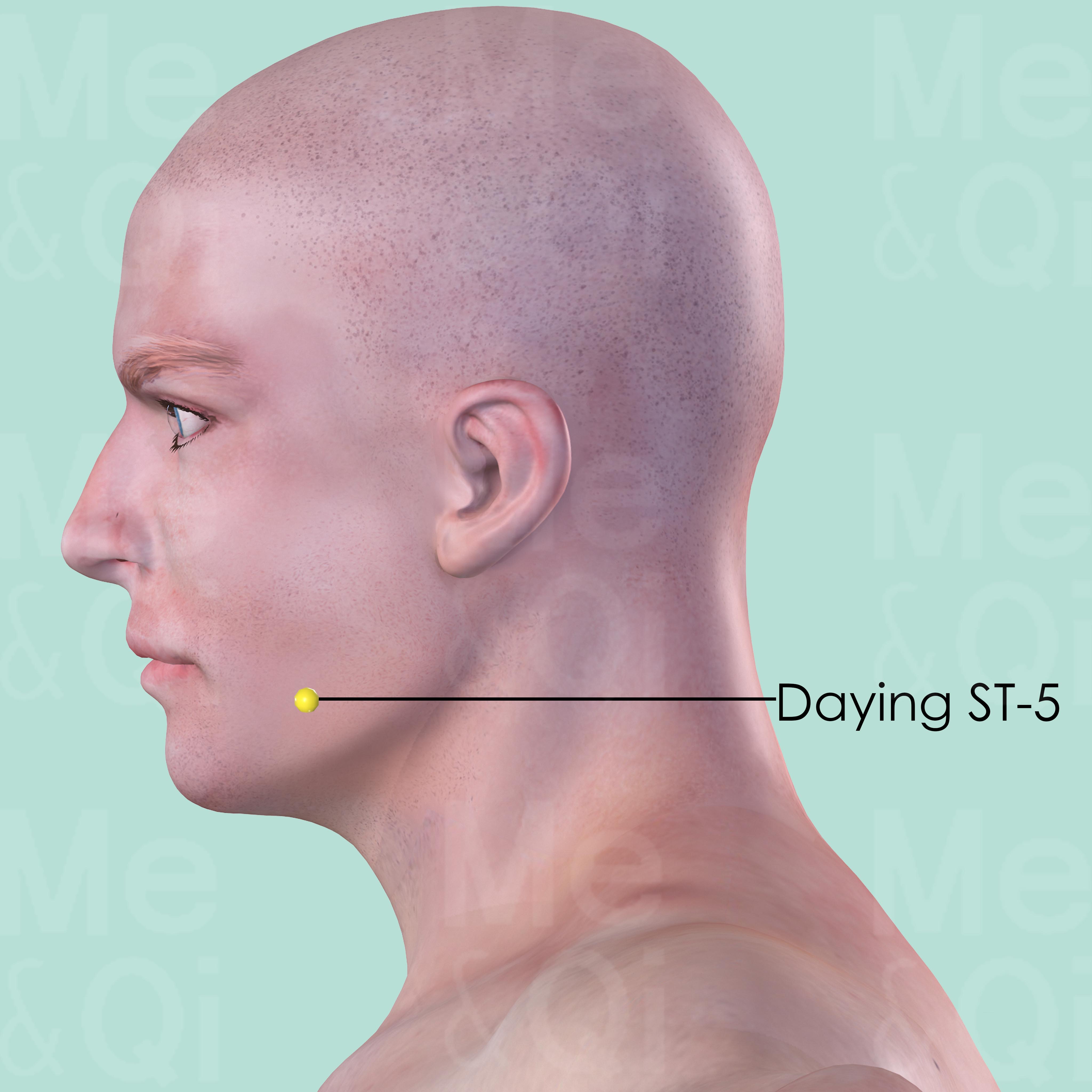
Daying ST-5
On the lateral mandible, on the anterior border of masseter muscle, in the groove-like depression appearing when the cheek is bulged.
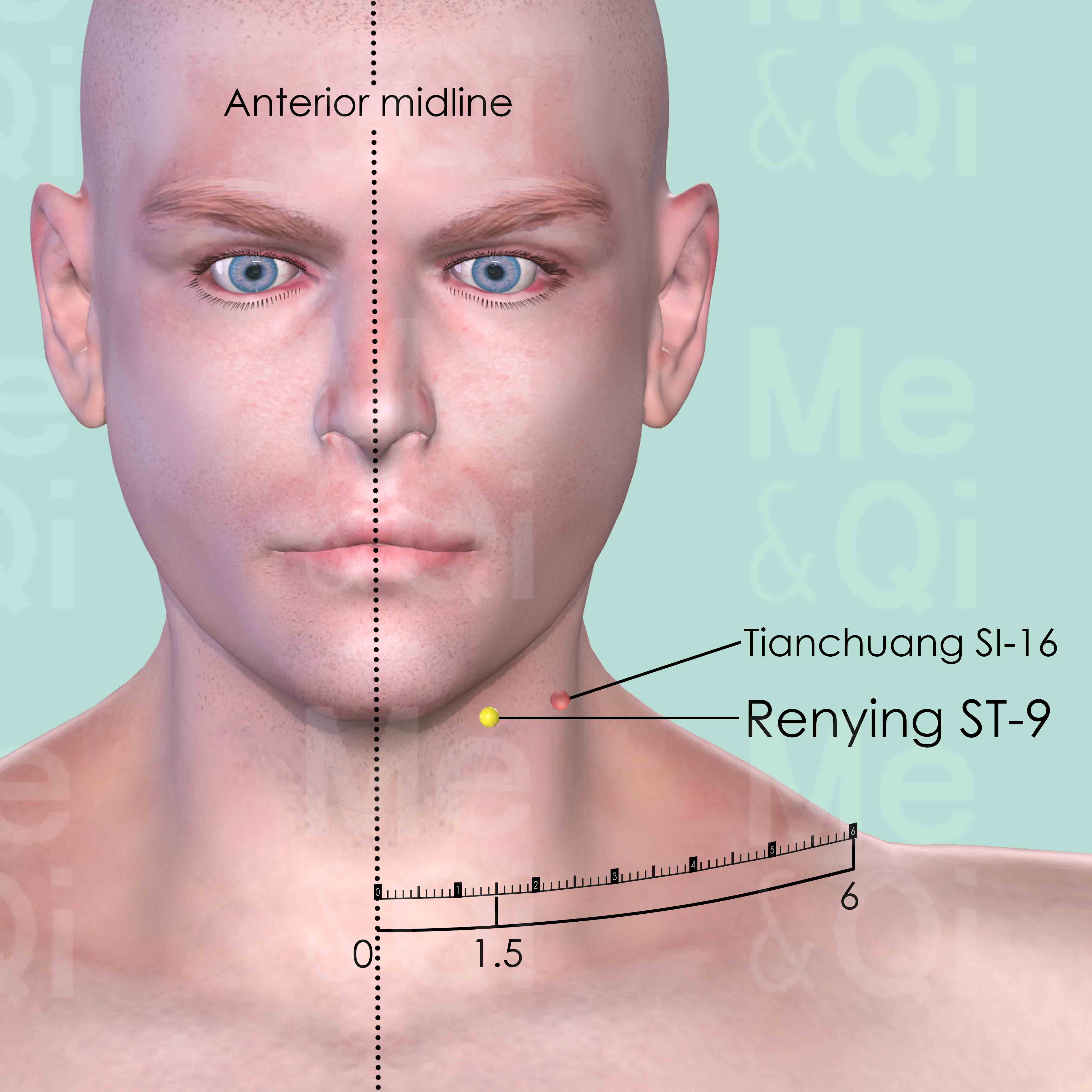
Renying ST-9
Level with the tip of Adam's apple, 1.5 cun lateral to the anterior midline, on the anterior border of the sternocleidomastoid muscle.
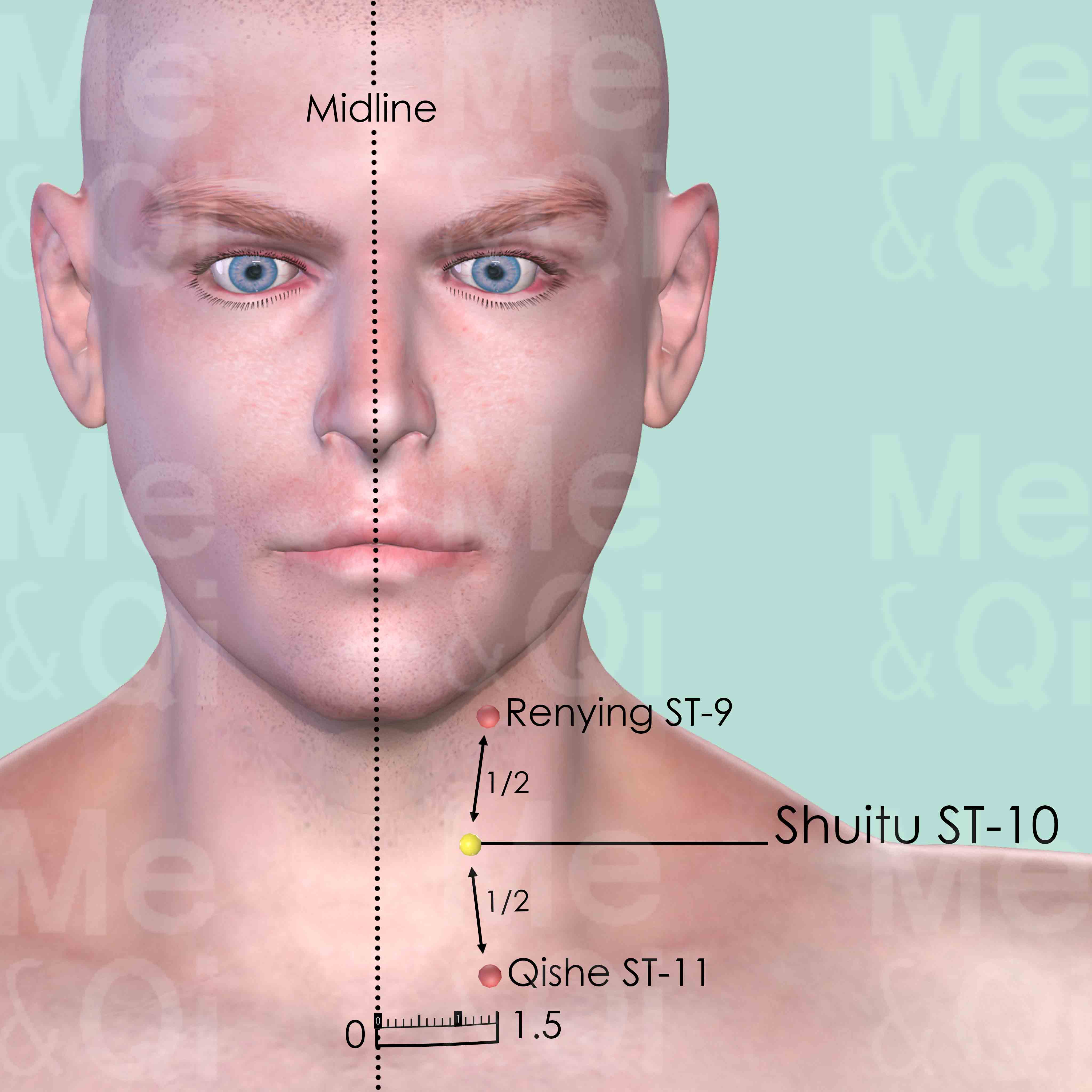
Shuitu ST-10
On the anterior border of sternocleidomastoid muscle, in the middle between Renying ST-9 and Qishe ST-11.
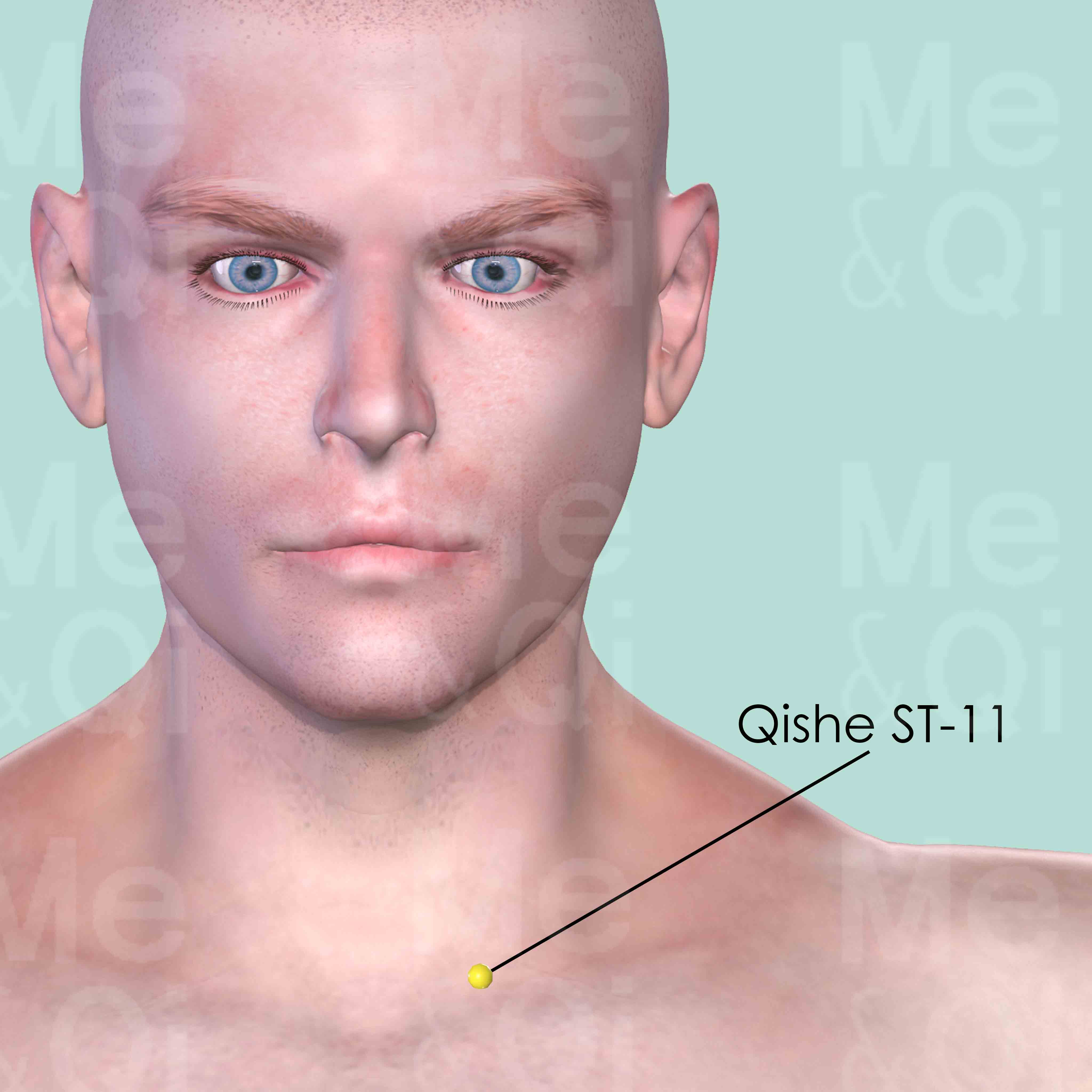
Qishe ST-11
On the upper border of the clavicle, between the tendons of the sternal and clavicular heads of the sternocleidomastoid muscle.
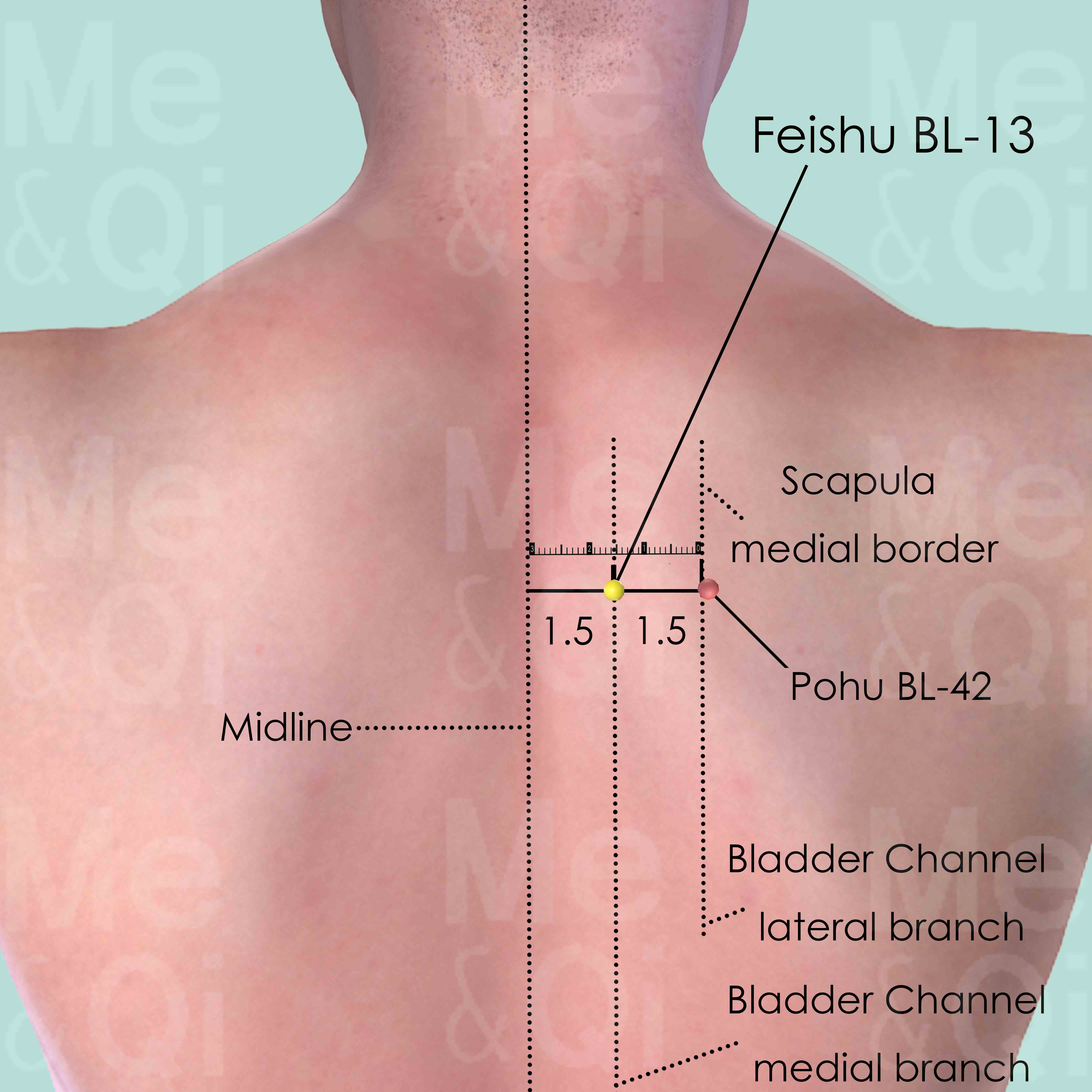
Feishu BL-13
1.5 cun lateral to the lower border of the spinous process of the 3rd thoracic vertebra (T3).
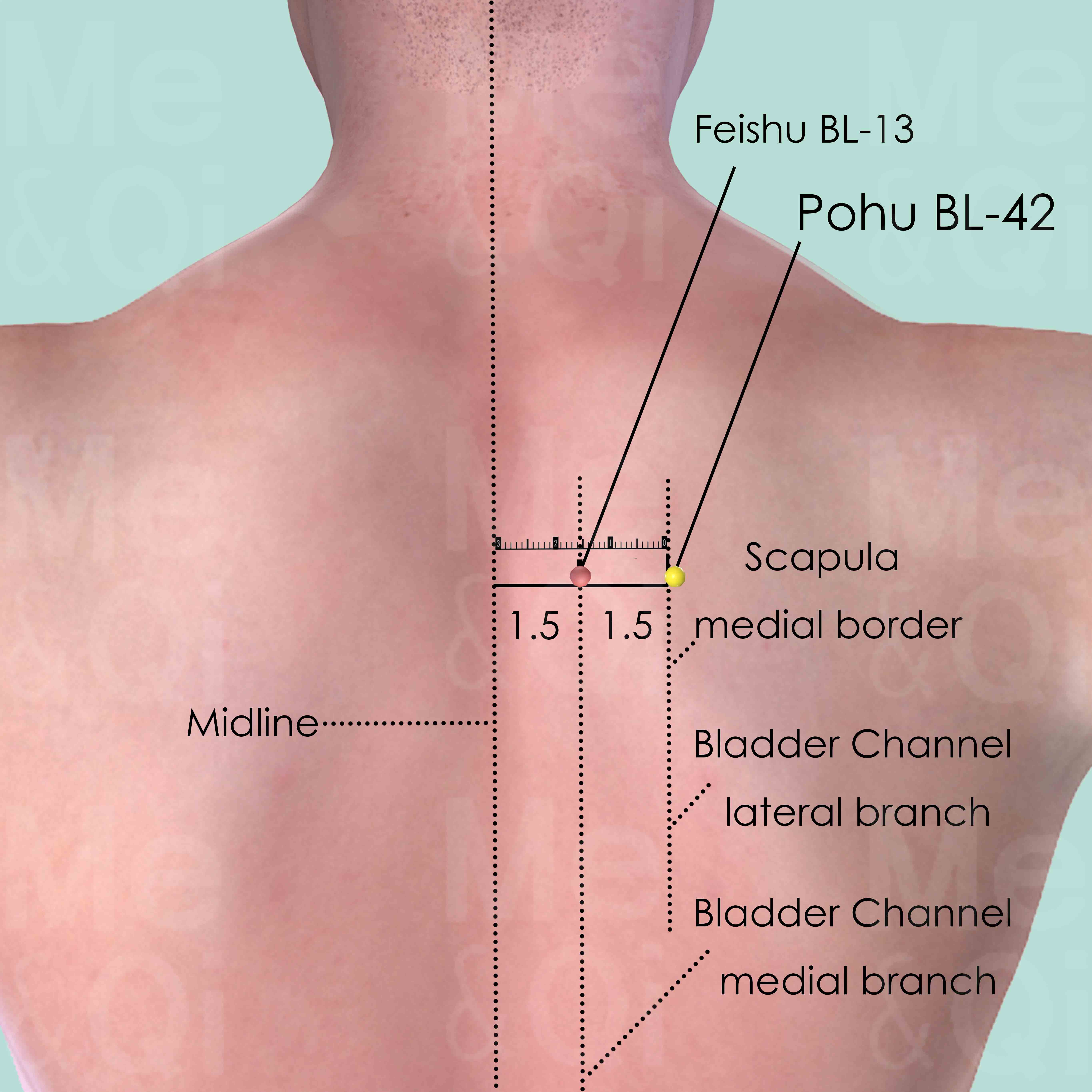
Pohu BL-42
3 cun (about 4 finger-breadths) lateral to the lower border of the spinous process of the 3rd thoracic vertebra (T3).
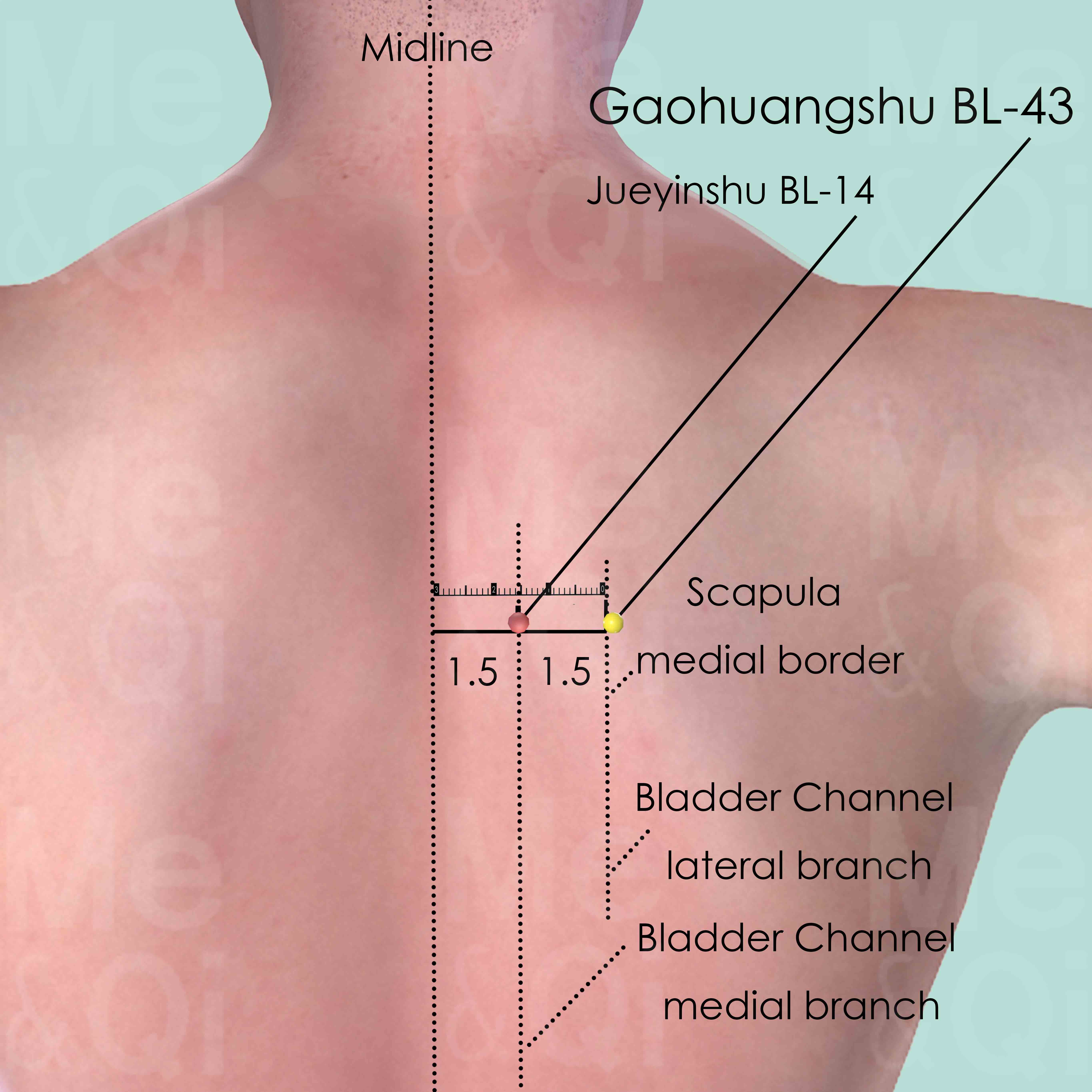
Gaohuangshu BL-43
3 cun (about 4 finger-breadths) lateral to the lower border of the spinous process of the 4th thoracic vertebra (T4).
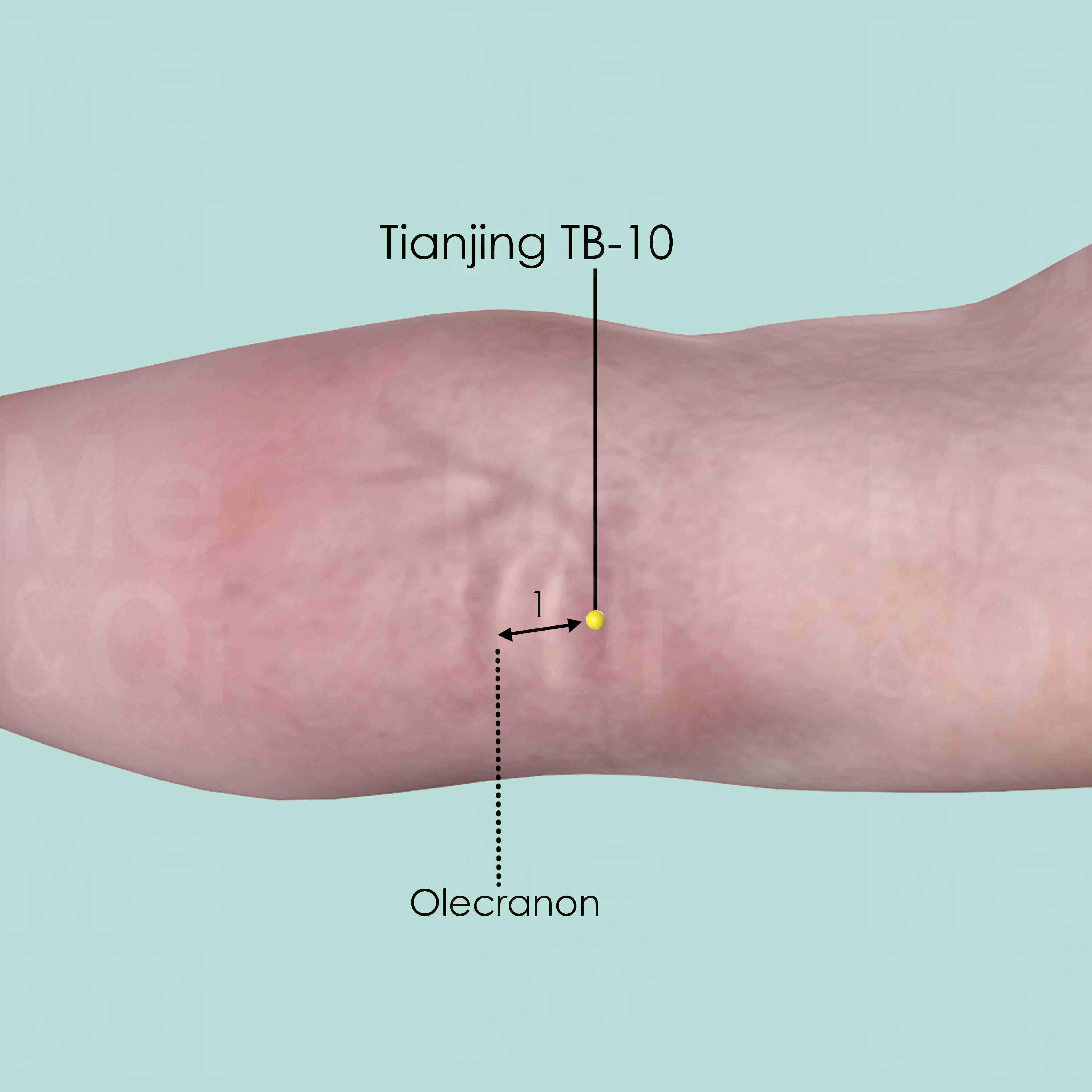
Tianjing TB-10
When the elbow is flexed, Tianjing TB-10 is in the depression about 1 cun superior to the olecranon.
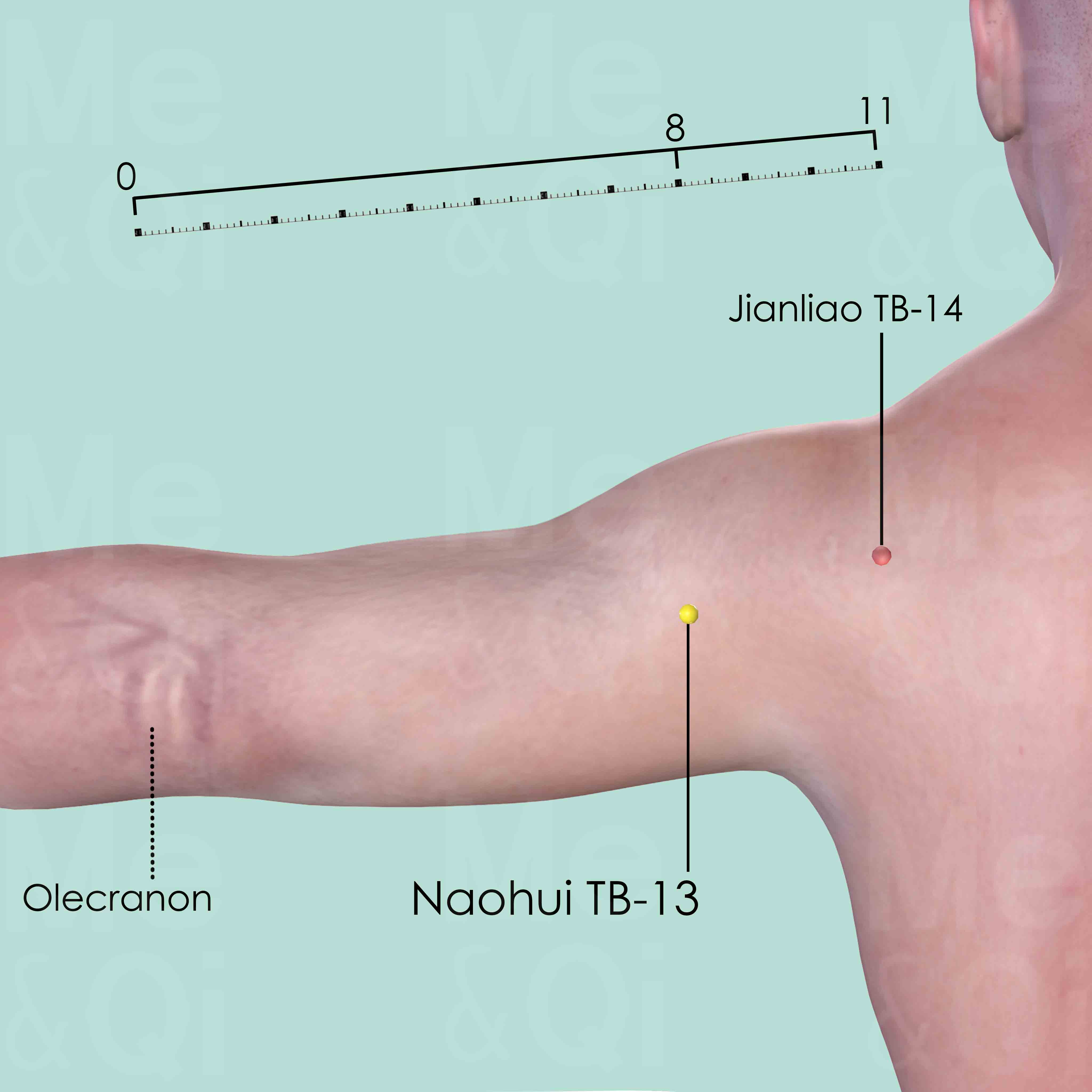
Naohui TB-13
On the line joining Jianliao TB-14 and the olecranon, 3 cun below Jianliao TB-14 which is at the lateral extremity of the acromion. Naohui TB-13 is on the posterior border of deltoid muscle.
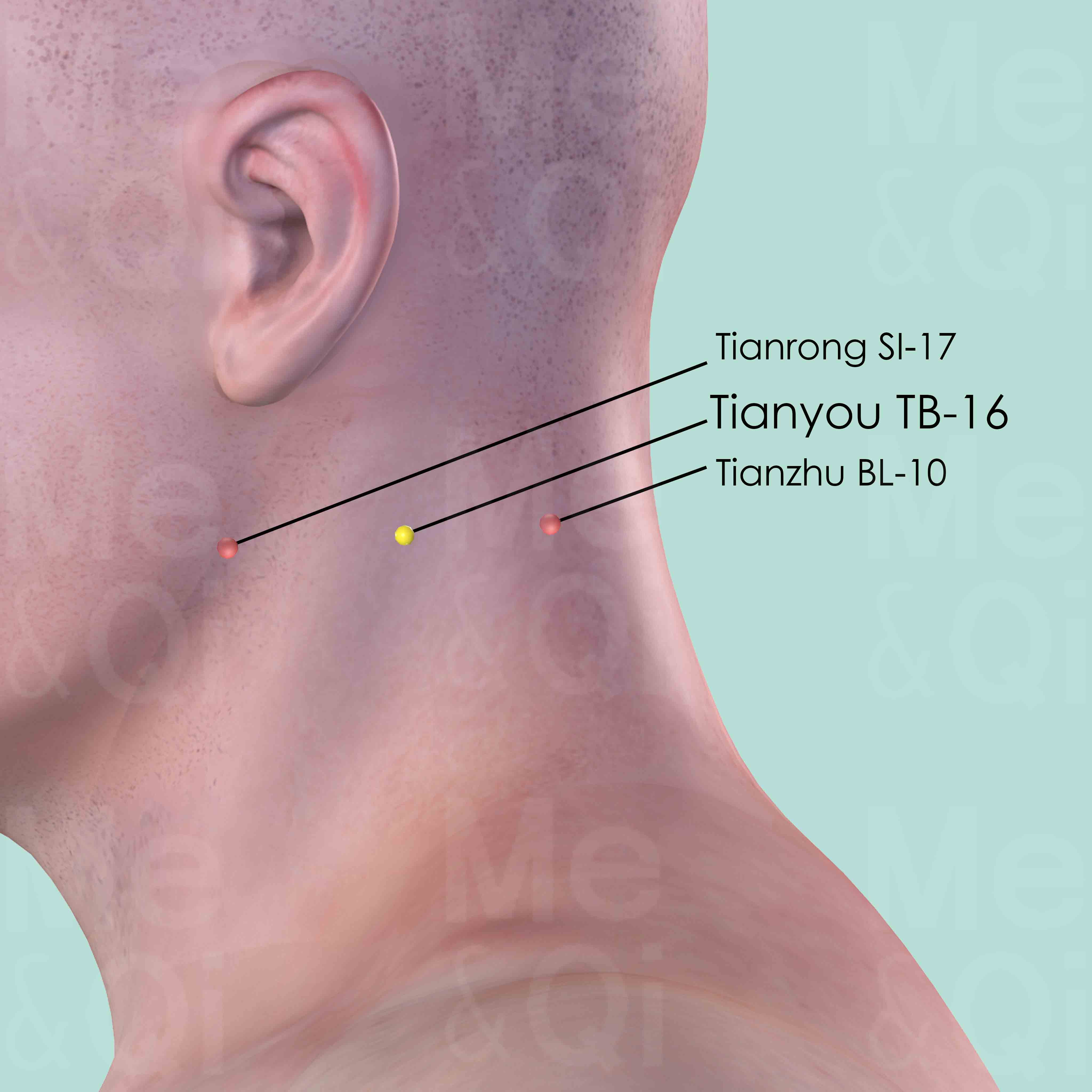
Tianyou TB-16
Posterior and inferior to the mastoid process, on the posterior border of sternocleidomastoid muscle, level with Tianrong SI-17 and Tianzhu BL-10.
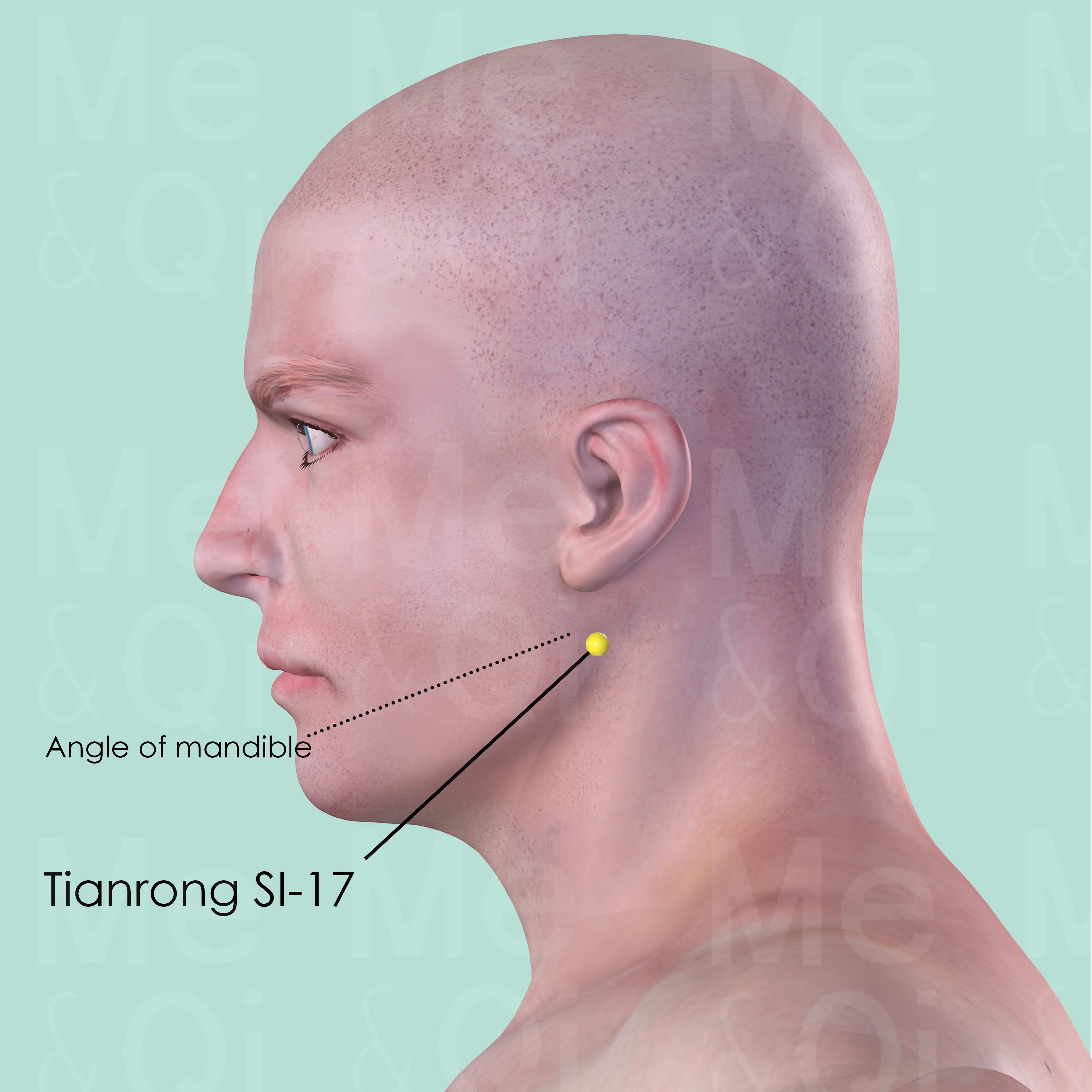
Tianrong SI-17
Posterior to the angle of mandible, in the depression on the anterior border of sternocleidomastoid muscle.
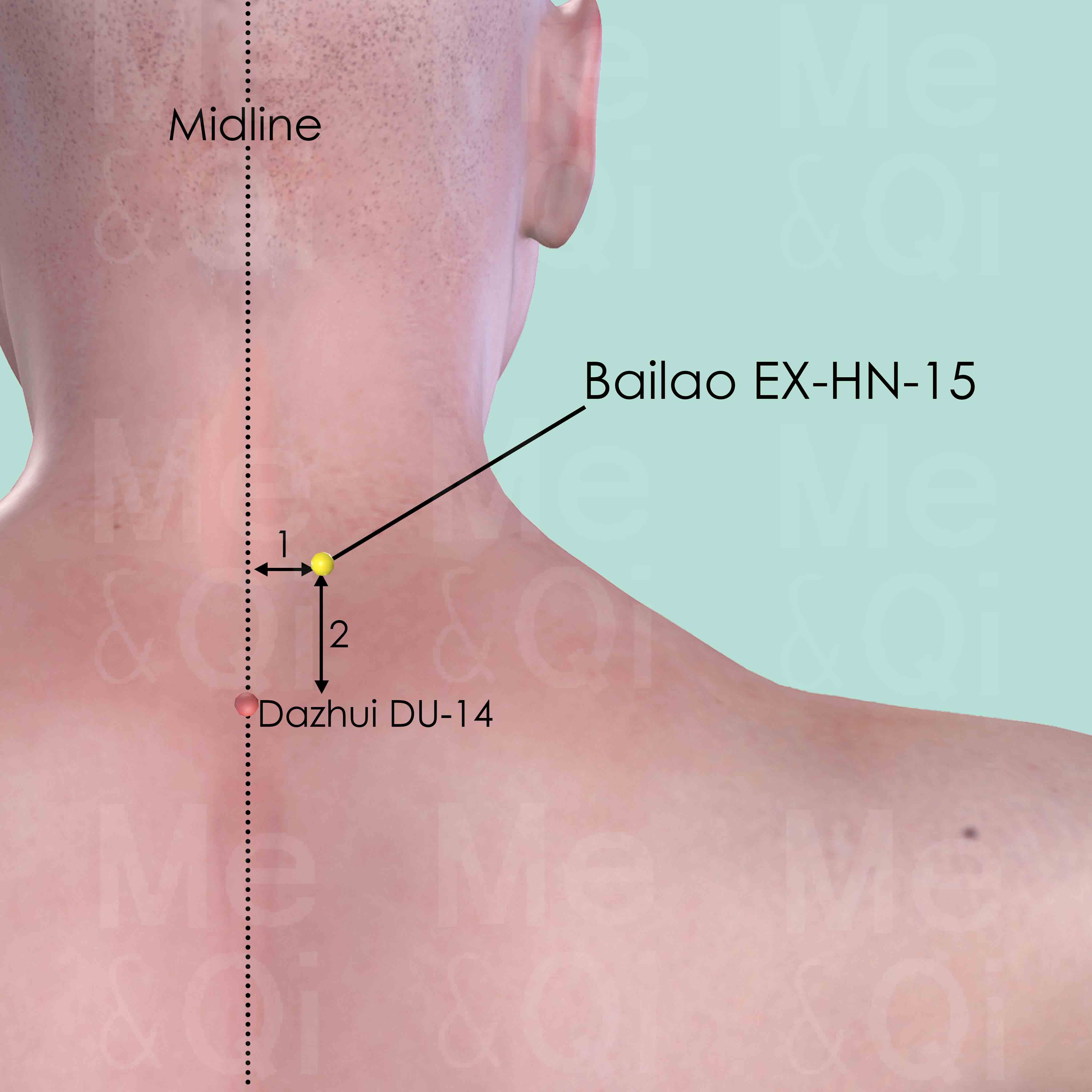
Bailao EX-HN-15
2 cun above the lower border of the spinous process of the 7th cervical vertebra (C7) and 1 cun lateral to the midline.
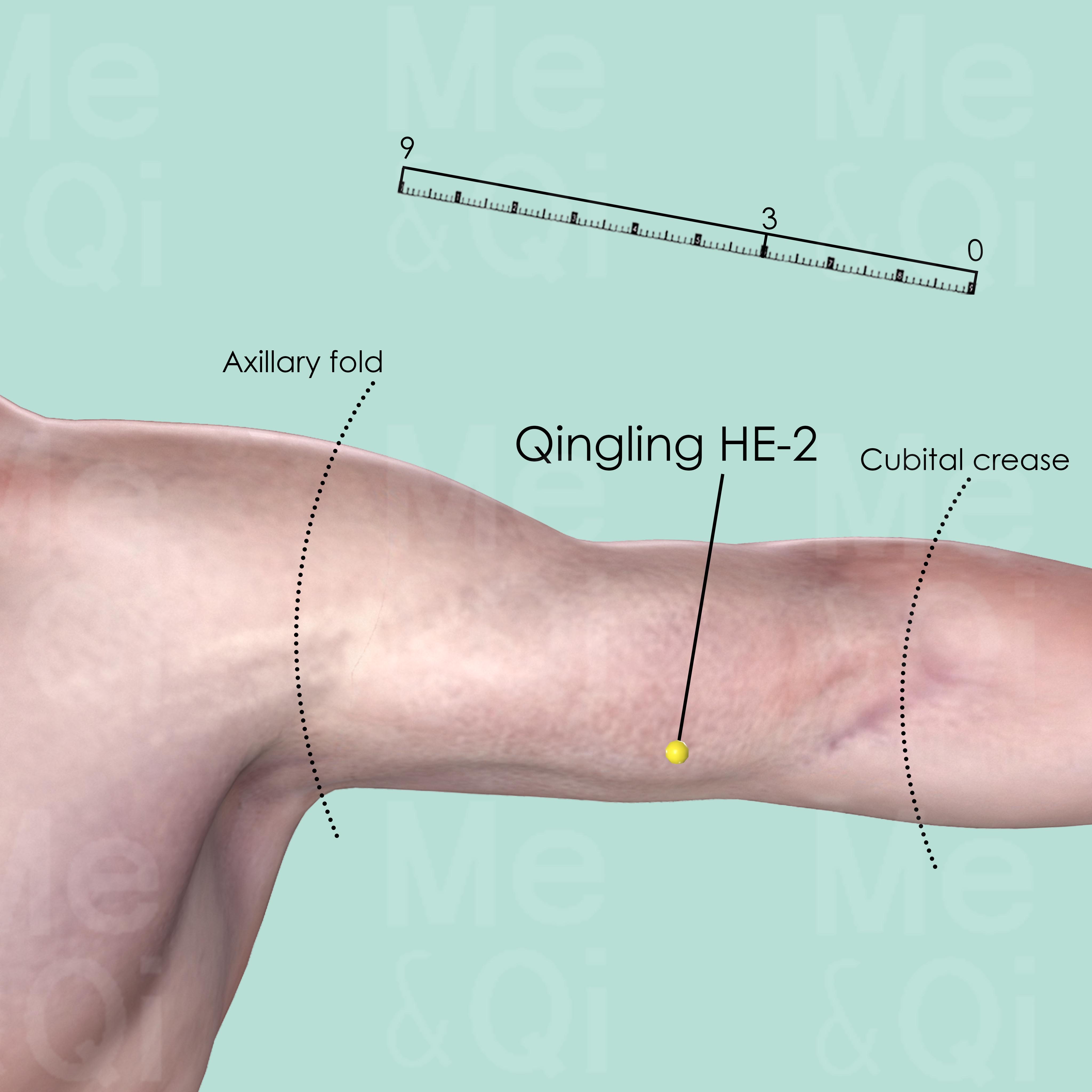
Qingling HE-2
3 cun above the medial end of the transverse cubital crease, in the depression medial to the biceps brachii muscle.
TCM Herbs for Tuberculosis
Explore below some TCM herbs used to address tuberculosis, organized by herb category.
- By Herb Category
- Herbs that clear heat and relieve toxicity
- Herbs that invigorate the blood
- Tonic herbs for yin deficiency
- Cool herbs that transform phlegm and stop cough
- Herbs that clear heat and purge fire and/or clear summer heat
- Herbs that clear heat and dry dampness
- Tonic herbs for blood deficiency
- Herbs that dispel wind and dampness
- Herbs that cool the blood
- Tonic herbs for qi deficiency
- Herbs that stop bleeding
- Herbs that pacify internal liver wind and stop tremors
- Tonic herbs for yang deficiency
- Warm/Acrid herbs that release the exterior
- Cool/Acrid herbs that release the exterior
- Herbs that relieve coughing and wheezing
- Herbs that clear yin deficiency heat
- Herbs that anchor and calm the spirit
- Laxative herbs that drain downward
- Herbs that regulate qi
- Purgative herbs that drain downward
- Warm herbs that transform phlegm and stop cough
Herbs that clear Heat and relieve Toxicity
Tuberculosis can be treated by these herbs if it arises from internal heat and toxic accumulations, aiding in detoxification and cooling the body.
One such herb is Forsythia Fruits (Lian Qiao), a key herb in some formulas recommended for tuberculosis, like Jing Jie Lian Qiao Tang.
Other herbs of this category are listed in the table below.
"Herbs that clear Heat and relieve Toxicity" recommended for tuberculosis
| Herb | Formulas they belong to (if applicable) |
|---|---|
| Forsythia Fruits (Lian Qiao) | Jing Jie Lian Qiao Tang |
| Natural Indigo (Qing Dai) | Ke Xie Fang |
| Catclaw Buttercup Roots (Mao Zhao Cao) | Not applicable |
| Thunder God Vines (Lei Gong Teng) | Not applicable |
| Bistort Rhizomes (Quan Shen) | Not applicable |
| Castor Beans (Bi Ma Zi) | Not applicable |
| Chinese Tulip Bulbs (Shan Ci Gu) | Not applicable |
| Semiaquilegia Root Tubers (Tian Kui Zi) | Not applicable |
Herbs that invigorate the Blood
Tuberculosis can be treated by these herbs when it stems from stagnation or poor circulation of blood, helping to improve blood flow and alleviate related discomfort.
One such herb is Donkey-Hide Gelatin (E Jiao), a key herb in some formulas recommended for tuberculosis, like Bu Fei E Jiao Tang.
Other herbs of this category are listed in the table below.
"Herbs that invigorate the Blood" recommended for tuberculosis
| Herb | Formulas they belong to (if applicable) |
|---|---|
| Donkey-Hide Gelatin (E Jiao) | Bu Fei E Jiao Tang |
| Ground Beetles (Tu Bie Chong) | Da Huang Zhe Chong Wan |
| Leeches (Shui Zhi) | Di Dang Tang |
| Tabanus Horseflies (Meng Chong) | Di Dang Tang |
| Chinese Sage Herb (Shi Jian Chuan) | Not applicable |
| Cockle Shells (Wa Leng Zi) | Not applicable |
Tonic herbs for Yin Deficiency
Tuberculosis can be treated by these herbs when caused by a lack of Yin, which is essential for cooling and moistening the body, thereby restoring balance.
One such herb is Softshell Turtle Shells (Bie Jia), a key herb in some formulas recommended for tuberculosis, like Qin Jiao Bie Jia San.
Other herbs of this category are listed in the table below.
"Tonic herbs for Yin Deficiency" recommended for tuberculosis
Cool herbs that transform Phlegm and stop Cough
Tuberculosis can be treated by these herbs when it is related to heat-phlegm accumulation, aiding in dissolving phlegm and soothing the respiratory system.
One such herb is Fritillary Bulbs (Chuan Bei Mu), a key herb in some formulas recommended for tuberculosis, like Bei Mu Gua Lou San.
Other herbs of this category are listed in the table below.
"Cool herbs that transform Phlegm and stop Cough" recommended for tuberculosis
| Herb | Formulas they belong to (if applicable) |
|---|---|
| Fritillary Bulbs (Chuan Bei Mu) | Bei Mu Gua Lou San |
| Clam Shells (Ha Ke) | Not applicable |
| Costazia Skeletons (Fu Hai Shi) | Not applicable |
| Sargassum (Hai Zao) | Not applicable |
Herbs that clear Heat and purge Fire and/or clear Summer Heat
Tuberculosis can be treated by these herbs when it arises from excessive internal heat or fire, aiding in cooling the body and balancing internal temperature.
One such herb is Cape Jasmine Fruits (Zhi Zi), a key herb in some formulas recommended for tuberculosis, like Ke Xie Fang.
Other herbs of this category are listed in the table below.
"Herbs that clear Heat and purge Fire and/or clear Summer Heat" recommended for tuberculosis
| Herb | Formulas they belong to (if applicable) |
|---|---|
| Cape Jasmine Fruits (Zhi Zi) | Ke Xie Fang | Zhi Zi Chi Tang |
| Sweet Wormwood Herbs (Qing Hao) | Qing Hao Bie Jia Tang |
| Anemarrhena Rhizomes (Zhi Mu) | San Zhong Kui Jian Tang |
| Heal-All Spikes (Xia Ku Cao) | Not applicable |
Herbs that clear Heat and dry Dampness
Tuberculosis can be treated by these herbs when caused by excessive dampness and heat within the body, aiming to restore balance by drying dampness and clearing heat.
One such herb is Phellodendron Bark (Huang Bo), a key herb in some formulas recommended for tuberculosis, like San Zhong Kui Jian Tang.
Other herbs of this category are listed in the table below.
"Herbs that clear Heat and dry Dampness" recommended for tuberculosis
Tonic herbs for Blood Deficiency
Tuberculosis can be treated by these herbs in cases of blood deficiency, working to nourish and replenish the body's blood supply.
One such herb is Prepared Rehmannia (Shu Di huang), a key herb in some formulas recommended for tuberculosis, like Da Bu Yin Wan.
Other herbs of this category are listed in the table below.
"Tonic herbs for Blood Deficiency" recommended for tuberculosis
| Herb | Formulas they belong to (if applicable) |
|---|---|
| Prepared Rehmannia (Shu Di huang) | Da Bu Yin Wan | Dang Gui Liu Huang Tang | Bai He Gu Jin Tang | Liu Wei Di Huang Wan |
| Dong Quai (Dang Gui) | Dang Gui Liu Huang Tang |
| Fleeceflower Roots (He Shou Wu) | Not applicable |
Herbs that dispel Wind and Dampness
Tuberculosis can be treated by these herbs when it is due to the invasion or accumulation of wind and dampness, which often affects the muscles and joints.
One such herb is Gentian Roots (Qin Jiao), a key herb in some formulas recommended for tuberculosis, like Qin Jiao Bie Jia San.
Other herbs of this category are listed in the table below.
"Herbs that dispel Wind and Dampness" recommended for tuberculosis
| Herb | Formulas they belong to (if applicable) |
|---|---|
| Gentian Roots (Qin Jiao) | Qin Jiao Bie Jia San |
| Honeycomb (Feng Fang) | Not applicable |
| Viper Snakes (Fu she) | Not applicable |
Herbs that cool the Blood
Tuberculosis can be treated by these herbs when it is a consequence of excess heat in the blood, helping to cool and detoxify the blood.
One such herb is Unprepared Rehmannia (Di Huang), a key herb in some formulas recommended for tuberculosis, like Dang Gui Liu Huang Tang.
Other herbs of this category are listed in the table below.
"Herbs that cool the Blood" recommended for tuberculosis
| Herb | Formulas they belong to (if applicable) |
|---|---|
| Unprepared Rehmannia (Di Huang) | Dang Gui Liu Huang Tang | Bai He Gu Jin Tang |
| Stellaria Roots (Yin Chai Hu) | Qing Gu San |
| Field Thistles (Xiao Ji) | Shi Hui San |
Tonic herbs for Qi Deficiency
Tuberculosis can be treated by these herbs when stemming from a lack of vital energy or Qi, helping to boost energy and overall vitality.
One such herb is Ginseng (Ren Shen), a key herb in some formulas recommended for tuberculosis, like Bu Fei Tang.
Other herbs of this category are listed in the table below.
"Tonic herbs for Qi Deficiency" recommended for tuberculosis
| Herb | Formulas they belong to (if applicable) |
|---|---|
| Ginseng (Ren Shen) | Bu Fei Tang | Ren Shen Ge Jie San | Sheng Mai San |
| Milkvetch Roots (Huang Qi) | Bu Fei Tang | Huang Qi Jian Zhong Tang |
| Maltose (Yi Tang) | Huang Qi Jian Zhong Tang |
Herbs that stop bleeding
Tuberculosis can be treated by these herbs in cases where it is due to internal or external bleeding, working to stabilize and constrict blood flow.
One such herb is Japanese Thistle (Da Ji), a key herb in some formulas recommended for tuberculosis, like Shi Hui San.
Other herbs of this category are listed in the table below.
"Herbs that stop bleeding" recommended for tuberculosis
| Herb | Formulas they belong to (if applicable) |
|---|---|
| Japanese Thistle (Da Ji) | Shi Hui San |
| Bletilla Rhizomes (Bai Ji) | Not applicable |
Herbs that pacify Internal Liver Wind and stop Tremors
Tuberculosis can be treated by these herbs when caused by internal wind from Liver disharmony, often manifesting in symptoms like spasms or tremors.
One such herb is Gastrodia Rhizomes (Tian Ma), a key herb in some formulas recommended for tuberculosis, like Ban Xia Bai Zhu Tian Ma Tang.
Other herbs of this category are listed in the table below.
"Herbs that pacify Internal Liver Wind and stop Tremors" recommended for tuberculosis
| Herb | Formulas they belong to (if applicable) |
|---|---|
| Gastrodia Rhizomes (Tian Ma) | Ban Xia Bai Zhu Tian Ma Tang |
| Centipedes (Wu Gong) | Not applicable |
Tonic herbs for Yang Deficiency
Tuberculosis can be treated by these herbs in situations of diminished Yang energy, aiming to warm and activate the body's functions.
One such herb is Tokay Geckos (Ge Jie), a key herb in some formulas recommended for tuberculosis, like Ren Shen Ge Jie San.
Other herbs of this category are listed in the table below.
"Tonic herbs for Yang Deficiency" recommended for tuberculosis
| Herb | Formulas they belong to (if applicable) |
|---|---|
| Tokay Geckos (Ge Jie) | Ren Shen Ge Jie San |
| Deer Bones (Lu Gu) | Not applicable |
Warm/Acrid herbs that release the Exterior
Tuberculosis can be treated by these herbs when there is a need to dispel external cold and warm the body, especially in cases where there is insufficient Yang energy internally.
One such herb is Japanese Catnip (Jing Jie), a key herb in some formulas recommended for tuberculosis, like Jing Jie Lian Qiao Tang.
Other herbs of this category are listed in the table below.
"Warm/Acrid herbs that release the Exterior" recommended for tuberculosis
| Herb | Formulas they belong to (if applicable) |
|---|---|
| Japanese Catnip (Jing Jie) | Jing Jie Lian Qiao Tang |
| Cinnamon Twigs (Gui Zhi) | Chai Hu Gui Jiang Tang |
Cool/Acrid herbs that release the Exterior
Tuberculosis can be treated by these herbs when the body needs to harmonize with external environmental changes, particularly when there's a need to expel pathogenic factors like wind or cold without overly cooling the body.
One such herb is Mulberry Leaves (Sang Ye), a key herb in some formulas recommended for tuberculosis, like Qing Zao Jiu Fei Tang.
Other herbs of this category are listed in the table below.
"Cool/Acrid herbs that release the Exterior" recommended for tuberculosis
| Herb | Formulas they belong to (if applicable) |
|---|---|
| Mulberry Leaves (Sang Ye) | Qing Zao Jiu Fei Tang | Sha Shen Mai Men Dong Tang |
| Bupleurum Roots (Chai Hu) | Chai Hu Gui Jiang Tang |
Herbs that relieve coughing and wheezing
Tuberculosis can be treated by these herbs when it originates from obstructions in the lung pathways, helping to ease respiratory discomfort and restore normal breathing.
One such herb is Stemona Roots (Bai Bu), which is directly recommended for tuberculosis.
Herbs that clear Yin Deficiency Heat
Tuberculosis can be treated by these herbs if it results from a deficiency of Yin, which manifests as false heat symptoms, working to nourish Yin and lower heat.
One such herb is Chinese Holly Leaves (Gong Lao Ye), which is directly recommended for tuberculosis.
Herbs that anchor and calm the Spirit
Tuberculosis can be treated by these herbs if it stems from disturbances in the Shen (spirit), often due to instability in the heart and kidney energies.
One such herb is Oyster Shells (Mu Li ke), a key herb in some formulas recommended for tuberculosis, like Mu Li San.
Laxative herbs that drain downward
Tuberculosis can be treated by these herbs when there's a need for a milder form of bowel movement to alleviate constipation and regulate digestion.
One such herb is Peking Spurge Roots (Jing Da Ji), which is directly recommended for tuberculosis.
Herbs that regulate Qi
Tuberculosis can be treated by these herbs when resulting from Qi stagnation or imbalance, helping to promote the smooth flow of Qi in the body.
One such herb is Plum Flowers (Mei Hua), which is directly recommended for tuberculosis.
Purgative herbs that drain downward
Tuberculosis can be treated by these herbs in cases of severe constipation or internal heat, using strong downward movement to purge accumulation.
One such herb is Rhubarb (Da Huang), a key herb in some formulas recommended for tuberculosis, like Da Huang Zhe Chong Wan.
Warm herbs that transform Phlegm and stop Cough
Tuberculosis can be treated by these herbs when it results from phlegm due to cold deficiency, aiming to warm the lungs and dissolve phlegm accumulation.
One such herb is Crow-Dipper Rhizomes (Ban Xia), a key herb in some formulas recommended for tuberculosis, like Ban Xia Bai Zhu Tian Ma Tang.

